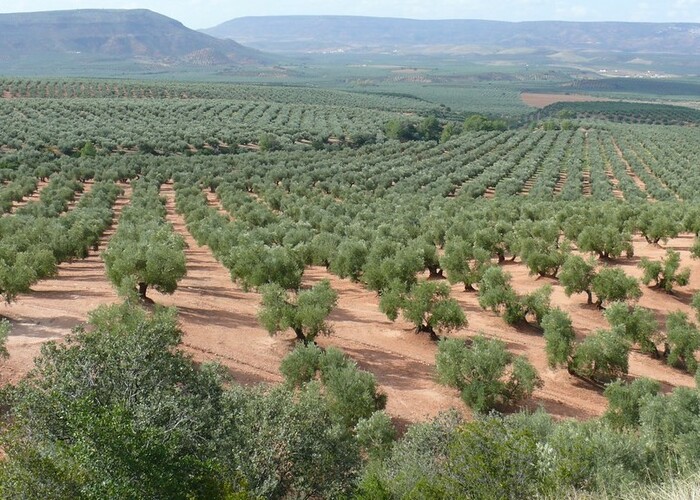SEVILLE – It is getting drier in the Andalucian region of southern Spain, and this it threatening the olive crops. Some areas already have conditions comparable to the desert regions of North Africa, experts say.
Due to the extreme drought, even many olive trees have not produced olives, while those trees can usually withstand heat and long periods of drought. Farmer Felipe Elvira with a 100-hectare olive grove in Jaén says in La Nacion: “I am losing 80% of my production this year. A tree of this size needs at least 4 to 5 litres of moisture per day to be good and it has not that”. He points to a few trees that don’t grow olives at all.
“Used to water scarcity, but not to this extent”
Three exceptional heatwaves in less than 3 months have weakened crops already suffering from an abnormally dry winter. “We are used to a lack of water, but not to this extent,” said Elvira. In the past, an average of 800 litres of rain per square metre fell in the region. However, this year it is expected to be half. “Every year it gets worse”.
Related post: The first restrictions on water consumption in Spain are a fact
“Olive trees are very resistant to water scarcity,” said Juan Carlos Hervas, an expert at the farmers’ union COAG. But when the drought becomes extreme, “the trees activate mechanisms to protect themselves. They don’t die but produce nothing more,” he added.
Bad harvest
Hervas predicts that the olive harvest from non-irrigated land will be less than 20% of the last five years’ average. The harvest of irrigated land will be only 50 to 60% of this average. While water reserves are dwindling.
Guadalquivir is in an ‘absolutely dramatic situation’
The Guadalquivir River, which supplies Andalucia with much of its water, is in an “absolutely dramatic situation” because of the lack of rain, said Rosario Jimenez, a hydrology professor at the University of Jaen. Reservoirs fed by the river have only 30% of their capacity, according to the Spanish Ministry of Ecological Transition. “Some even have 10% capacity — that’s practically dried up,” Jimenez said.
Farmers have also noticed changes in recent years. “Not only does it rain less, but when it falls, it does so heavily. The water flows away without penetrating the earth,” Hervas said.
Parts of Spain driest in a thousand years
According to a study published this month in the journal Nature Geoscience, parts of Portugal and Spain are the driest in 1,000 years due to a high-pressure atmospheric system driven by climate change. The phenomenon will increase and endanger crops such as olives and grapes.
This means an important export is at stake: Spain supplies almost half of the world’s olive oil. The export of this “green gold” is worth about €3.6 billion per year.
Dependence on the olive
Olive oil has been an essential part of the Mediterranean diet for centuries and olive trees cover many hills in southern Spain, which are often unsuitable for other crops. “Many villages here are completely dependent on olive trees. Without olives there is no income anymore,” says Hervas.
According to the farmers’ union COAG, seven out of ten hectares of olive groves in Spain are not irrigated. With the rise in temperatures, 80% of the unirrigated olive tree plantations in Andalucia may no longer be suitable for growing olives. The quality of the olives may also decline as growers have to pick the fruit before it reaches maturity, the union said in a recent report.
Related post: Water theft in bone-dry Andalucia in exchange for money, trips and luxury
If farmers are subsequently tempted to irrigate their plots, this only further complicates the reservoirs. Up to four-fifths of water resources are used in agriculture in Spain.


